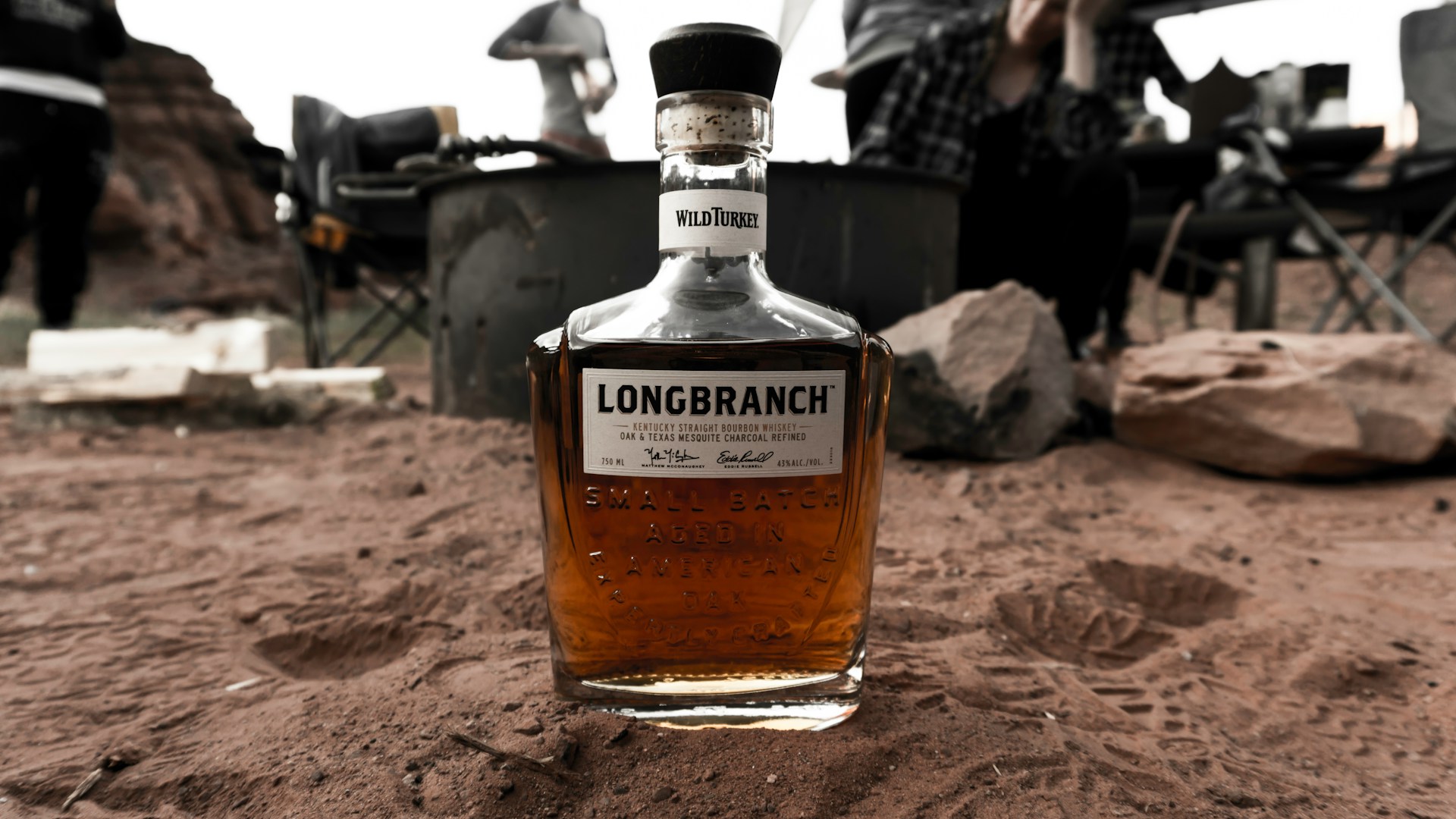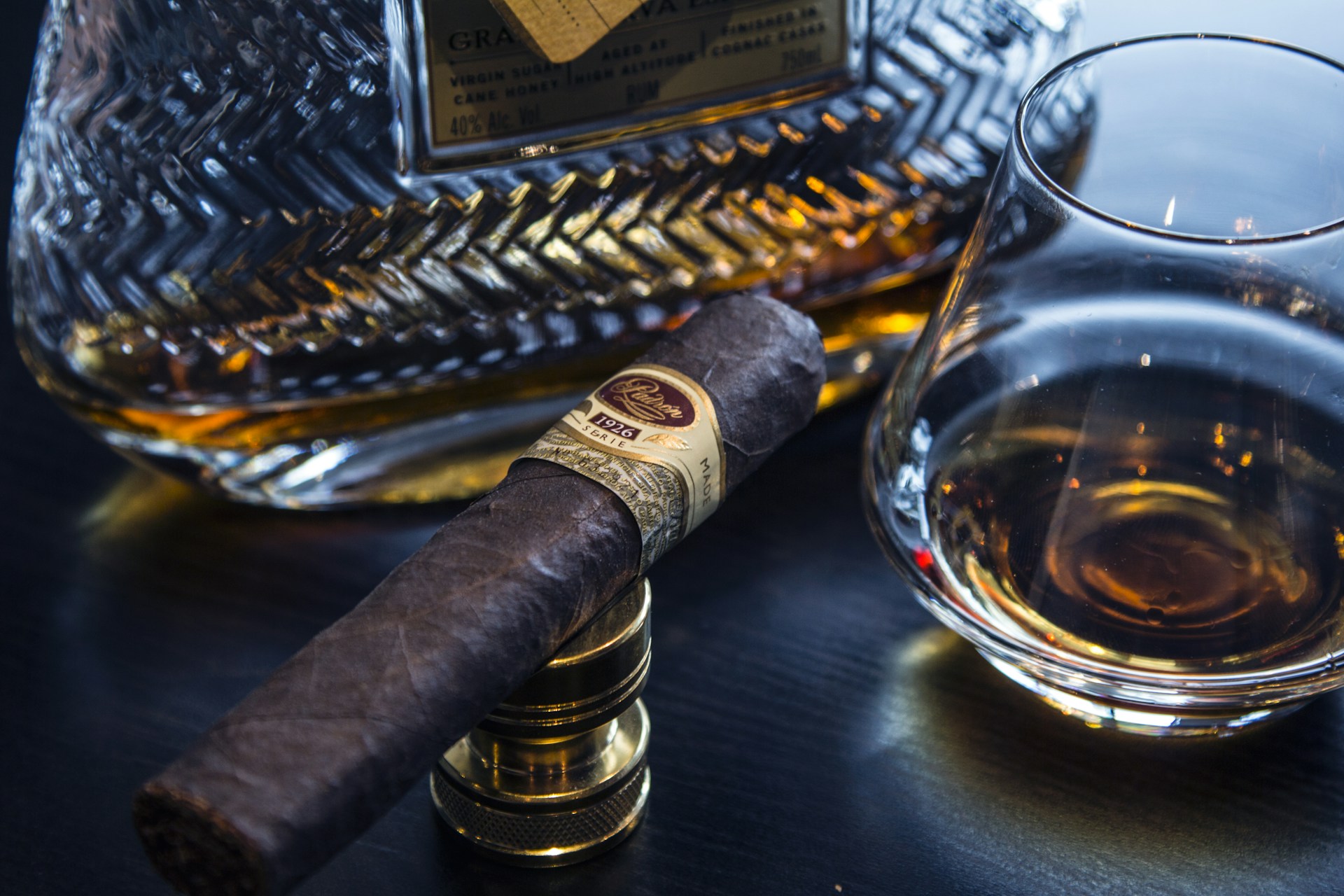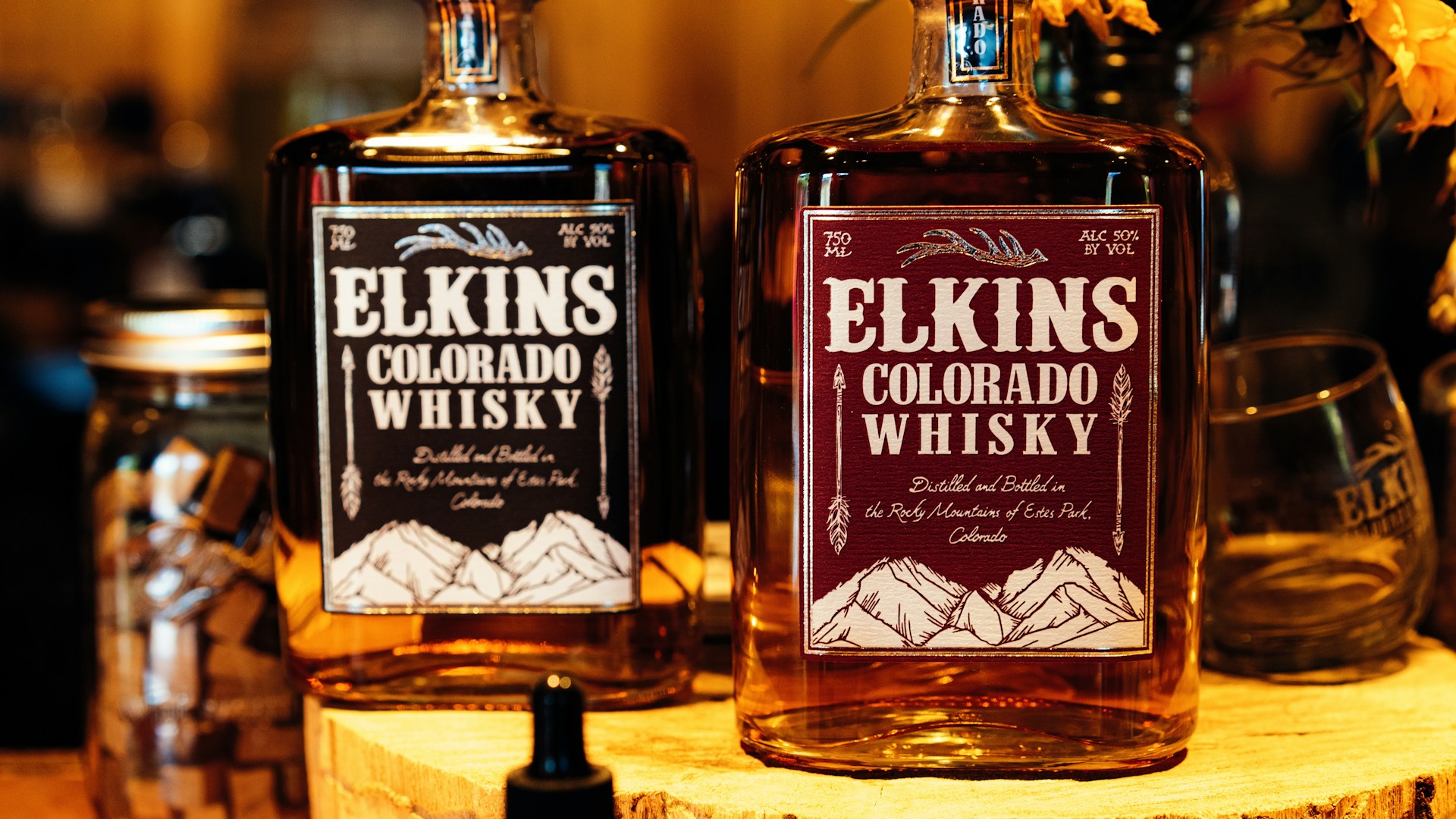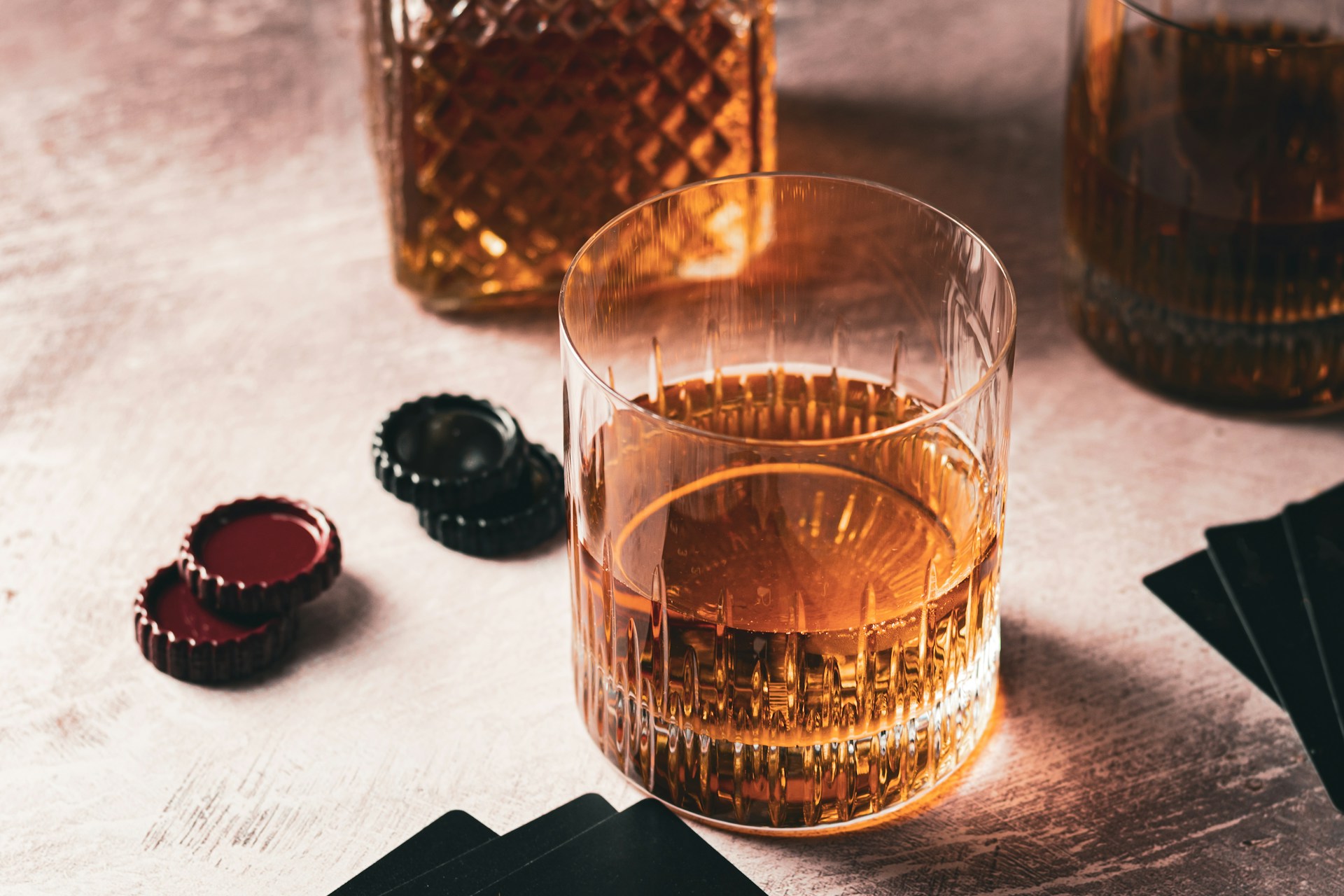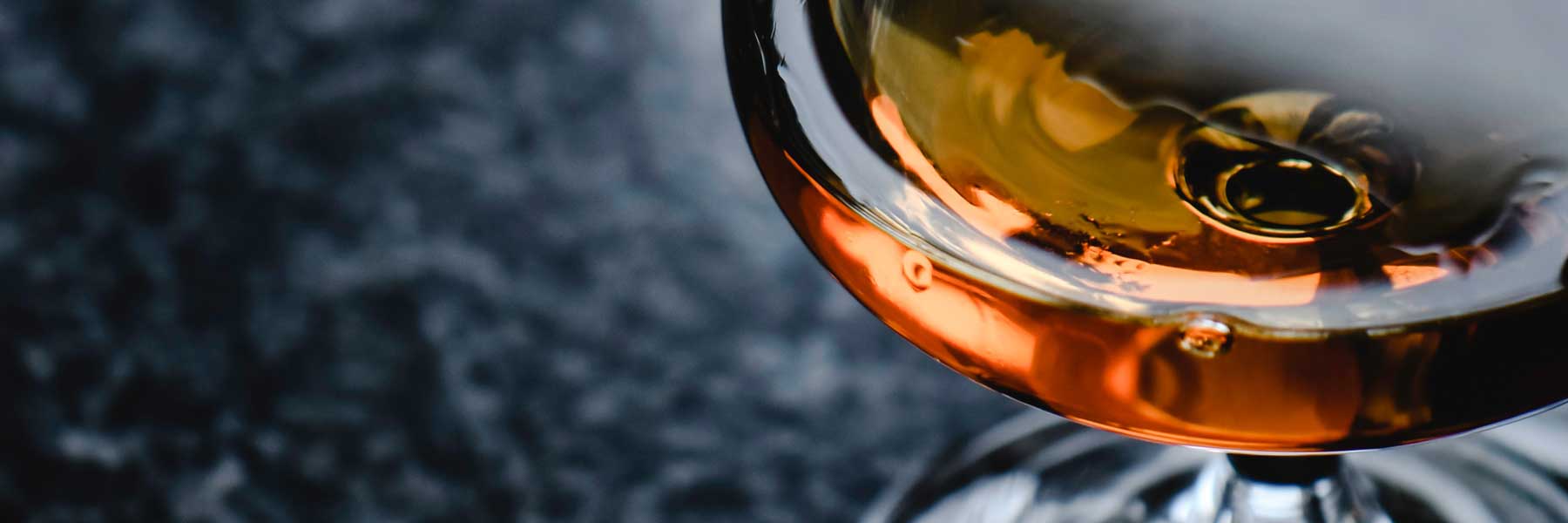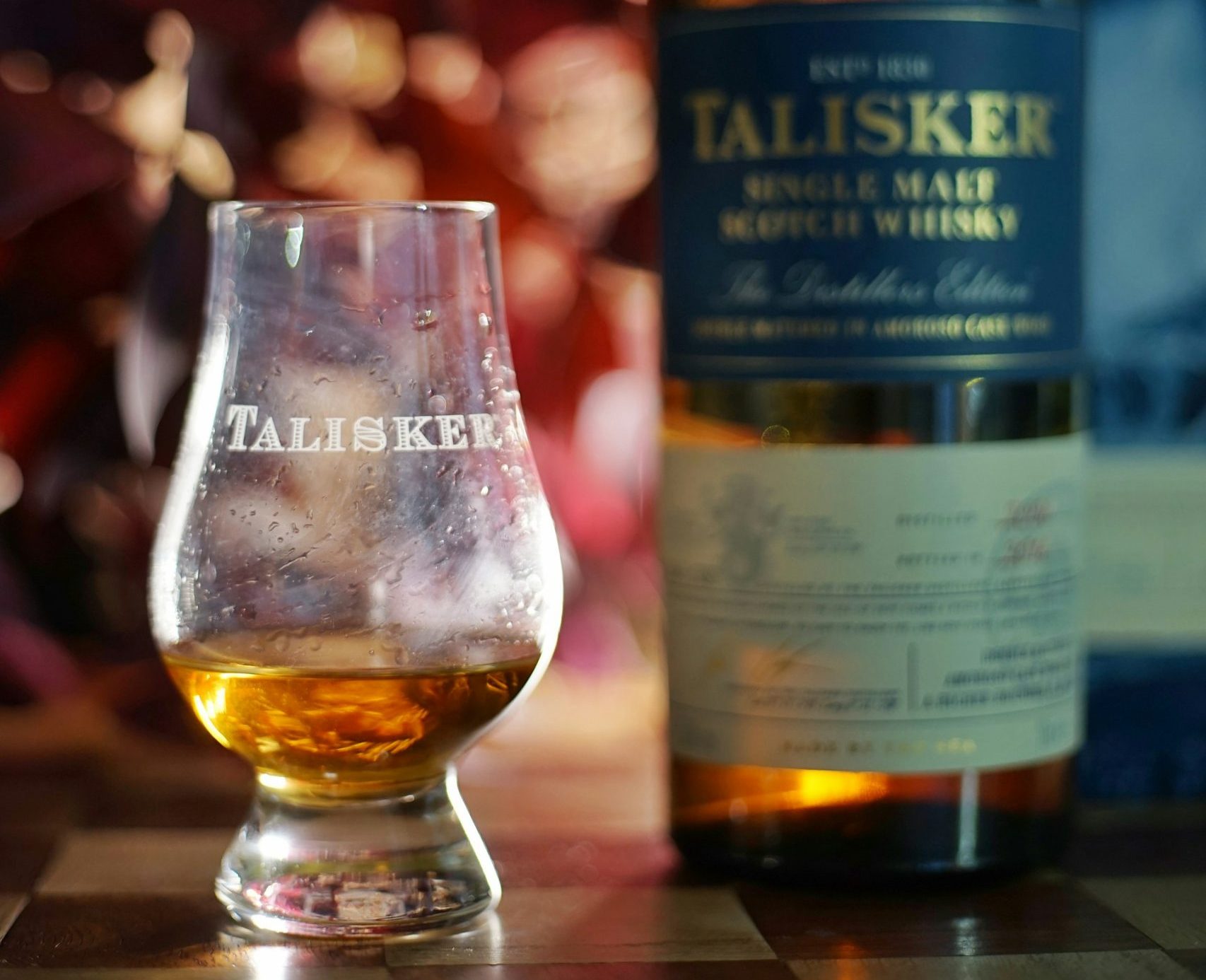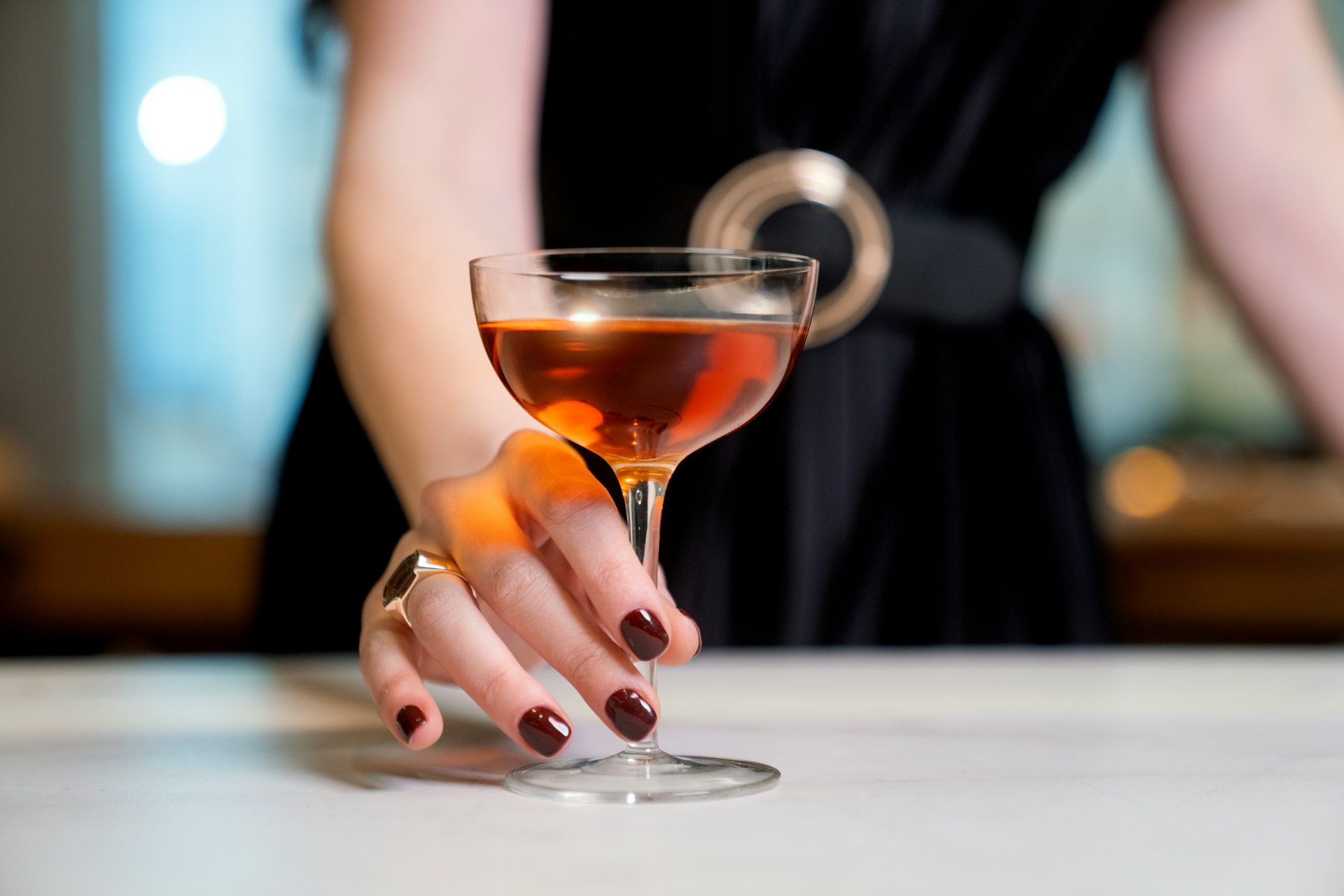What Makes Bourbon Different From Other Whiskeys?
Last updated on November 12th, 2024
Bourbon is a world-famous subtype of American whiskey. But what exactly sets it apart from its cousins like Scotch or Irish whiskey? From its unique ingredients to strict production rules, bourbon has a character all its own. Let’s see what makes bourbon truly special in the whiskey family.
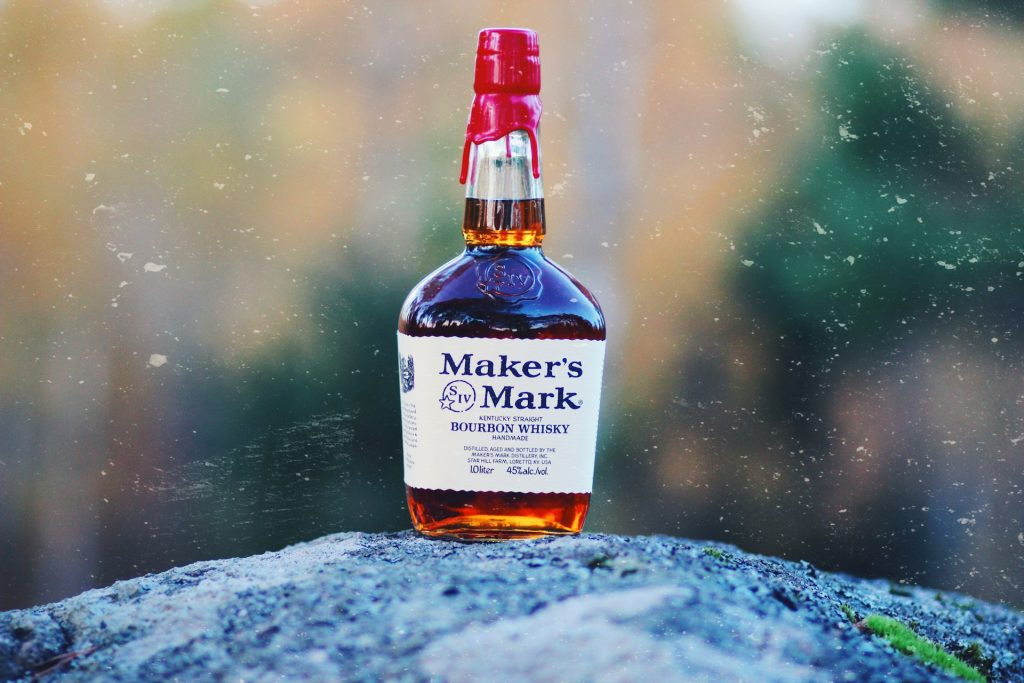
The Definition of Bourbon
Legal Requirements
Bourbon isn’t just a type of whiskey; it’s a strictly regulated spirit with specific legal requirements. To be labeled as bourbon, a whiskey must meet several criteria set by U.S. law:
- It must be made in the United States. Contrary to popular belief, bourbon doesn’t have to be made in Kentucky, although the state is famous for it.
- The mash bill (the mix of grains used) must contain at least 51% corn. This high corn content contributes to bourbon’s characteristic sweetness.
- It must be aged in new, charred oak barrels however it has no minimum aging requirement. Unlike Scotch or Irish whiskey, which often use previously used vessels, bourbon always starts with brand new barrels.
- Bourbon must be distilled to no more than 160 proof (80% alcohol by volume), entered into the barrel at no more than 125 proof (62.5% ABV), and bottled at a minimum of 80 proof (40% ABV).
- Nothing can be added to bourbon except water. Coloring, flavoring, or other spirits are strictly prohibited.
Origin of the Name
The exact origin of the name “bourbon” is debated. The most widely accepted theory traces it back to Bourbon County, Kentucky, which was established in 1785 and named after the French royal family. Whiskey produced in this area came to be known as “bourbon whiskey.”
Another theory suggests the name comes from Bourbon Street in New Orleans, a major port where Kentucky whiskey was sold. Regardless of its exact origin, the name “bourbon” became synonymous with this distinctive American whiskey by the 1840s.
Key Ingredients in Bourbon
A major factor that makes bourbon different from Scotch or Irish whiskey is the use of multiple cereal grains. Bourbon typically uses between 3-4 different grains to make the whiskey, whereas single malt Scotch and single malt Irish whiskey use one grain only (100% malted barley).
While the exact recipes vary between distilleries, all bourbons share a common ingredients of cereal grains, water, and yeast.
The Corn Majority
Corn is the star of the show in bourbon production, making up at least 51% of the grain mixture (or mash bill). This high corn content is what gives bourbon its characteristic sweetness and full-bodied flavor.
Many bourbons use even higher percentages of corn, with some mash bills containing up to 80% corn. The corn used is typically yellow dent corn, chosen for its high starch content which converts to sugar during the mashing process.
Secondary grains
While corn dominates the mash bill, other grains play crucial supporting roles in crafting bourbon’s complex flavor profile whilst aiding fermentation.
Rye: Often used as the secondary grain, rye adds spicy and peppery notes to the bourbon. It can make up anywhere from 10% to 35% of the mash bill. Bourbons with a higher rye content tend to have a spicier, more robust flavor.
Wheat: Some distillers opt for wheat instead of rye. Wheat imparts a softer, smoother character to the bourbon, often resulting in a sweeter taste with hints of vanilla and caramel. Famous wheated bourbons include Maker’s Mark and Pappy Van Winkle.
Malted Barley: While used in smaller quantities (as little as 5% of the mash bill), malted barley is crucial. It contains enzymes that help break down the starches in other grains into fermentable sugars which later create alcohol.
Water
The quality and mineral content of the water used in bourbon production can significantly impact the final product. Kentucky, the heartland of bourbon, is known for its limestone-filtered water, which is naturally iron-free and rich in calcium and magnesium. This water profile is believed to enhance fermentation and contribute to bourbon’s flavor.
Yeast
While not always discussed, yeast plays a vital role in bourbon production. Each distillery typically has its own proprietary yeast strain, often kept as a closely guarded ingredient. The yeast influences the fermentation process, creating flavours and aromas that carry through to the final product. Some distilleries, like Four Roses, are known for using multiple yeast strains in their recipes to create different flavour profiles.
These carefully selected ingredients, combined with strict production methods, are what gives bourbon its unique character and distinguish it from other whiskeys around the world.
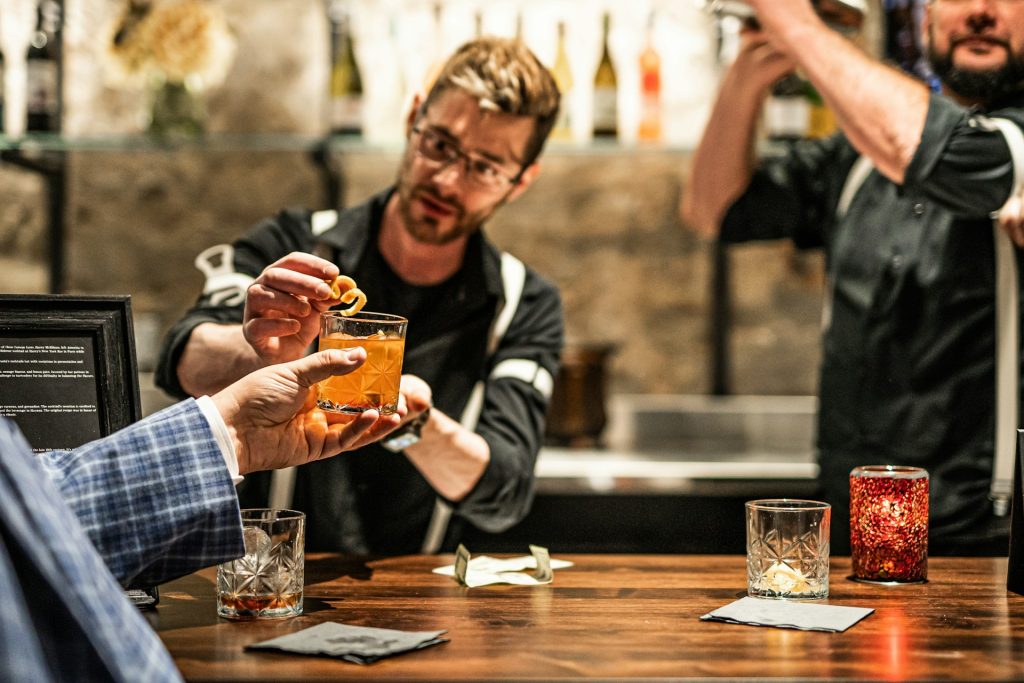
The Production Process of Bourbon
Another differentiating aspect of bourbon compared to other whiskeys is how it’s made.
The journey from grain to glass involves several crucial steps that transform raw ingredients into the complex spirit we know as bourbon. Each stage of this process contributes to the whiskey’s final flavor profile and character.
Mashing
The production begins with mashing, where the various grains are ground into a fine meal and mixed with water. This mixture is then heated to break down the starches in the grains into fermentable sugars. The process typically starts with the corn, as it requires the highest cooking temperature. Other grains are added later at lower temperatures.
Once all grains are cooked, the resulting liquid, known as “mash,” is cooled to prepare for fermentation.
This is where bourbon can be hugely different to Scotch or Irish whiskey.
Sour Mash
As you may have seen, many bourbons are made using the sour mash method. This is where a small portion of previously fermented, highly acidic mash called ‘sour’ is added to the fresh new mash.
During the next stage of fermentation, the small addition of ‘sour’ reduces the Ph level of the new mash mixture to prevent the growth of unwanted bacteria. Over several days of fermenting, the ‘sour’ keeps the new mash safe from developing any unwanted flavors.
The sour mash method is used almost exclusively for American whiskey and bourbon. It’s not a technique used for Scotch or Irish whiskey.
Fermentation
To initiate fermentation, yeast is added to the mash in large vats called fermenters. The yeast feeds on the sugars in the mash, producing alcohol and carbon dioxide. This process typically takes 3-5 days, resulting in a liquid called “distiller’s beer” with an alcohol content of about 10%.
During fermentation, the yeast also produces congeners – compounds that contribute significantly to the whiskey’s flavor and aroma. Each distillery’s unique yeast strain plays a crucial role in developing the bourbon’s character at this stage.
Distillation
Distillation is another factor that differentiates bourbon from single malt Scotch or single malt Irish whiskey. Bourbon is typically column distilled whereas single malts are only ever made using traditional pot stills.
- The first bourbon distillation occurs in a column still, producing a liquid called “low wines” with about 25-30% alcohol.
- The second distillation takes place in a pot still or doubler, increasing the alcohol content to around 65-80%.
This process concentrates the alcohol and refines the flavors. By law, bourbon cannot be distilled to more than 160 proof (80% alcohol).
Barrell Aging
After distillation, the clear spirit, now called “white dog,” is ready for aging. It’s diluted with water to no more than 125 proof (62.5% alcohol) and poured into new, charred oak barrels.
By law, bourbon barrels must be new and cannot have previously contained any other type of spirit. This is why the bourbon industry is one of the largest suppliers of casks to Scotland as bourbon barrels cannot be reused.
The charring of bourbon barrels is crucial. It caramelizes wood sugars and creates a layer of charcoal that filters the whiskey as it ages. Distillers can choose different levels of char, which affects the final flavor.
As the bourbon ages, it expands into the wood during warm weather and contracts during cool weather, extracting flavors and color from the barrel. This interaction between the spirit and the wood is what gives bourbon its distinctive amber color and much of its flavor.
This carefully controlled process, from mashing to barreling, is what transforms simple grains into the complex, flavorful spirit we know as bourbon.
Minimum Aging Requirements for Bourbon
By law, all bourbon must be aged for at least some period of time, but there’s no specified minimum duration. However, for a bourbon to be labeled as “straight bourbon,” it must be aged for at least two years. If a straight bourbon is aged for less than four years, the label must include an age statement.
Contrastingly, Scotch whisky or irish whiskey must be aged for a minimum of three years.
Many premium bourbons are aged for much longer, often 6, 8, 10 years or more. Extended aging can lead to more complex flavors, but it’s not always better – over-aging can sometimes result in an overly woody taste.
New Charred Oak Barrels
One of the defining characteristics of bourbon is that it must be aged in new, charred oak containers. This requirement sets bourbon apart from many other whiskeys, which often use previously used barrels.
The new barrels impart strong wood flavors to the bourbon, including vanilla, caramel, and spice notes. The charring process caramelizes wood sugars and creates a layer of charcoal that filters the whiskey as it ages, contributing to bourbon’s distinctive flavor profile.
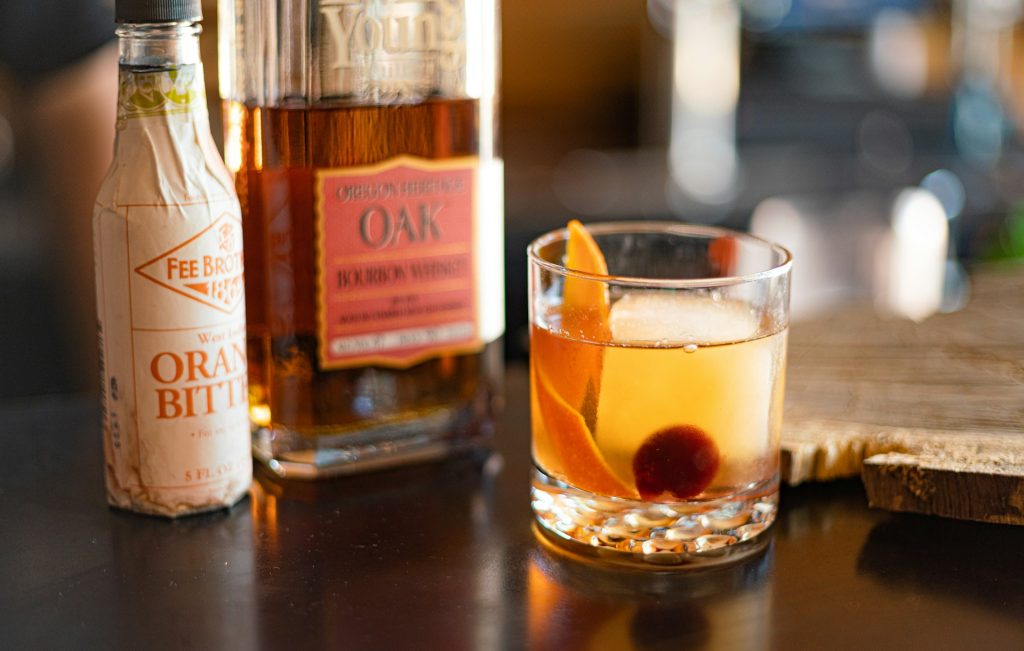
Flavor Profile of Bourbon
Bourbon is known for its rich, complex flavor profile that sets it apart from other whiskeys. While each bourbon has its unique character, there are some common tasting notes and flavors that bourbon enthusiasts often encounter.
Common Tasting Notes
- Sweetness: Thanks to its high corn content, bourbon often has a noticeable sweetness. This can manifest as notes of caramel, vanilla, maple syrup, or honey.
- Oak: The new charred oak barrels impart distinct woody flavors. These can range from mild oak to more intense cedar or even pencil shavings in well-aged bourbons.
- Spice: Especially in high-rye bourbons, you might detect spicy notes like cinnamon, nutmeg, or black pepper.
- Fruit: Many bourbons have fruity undertones, often reminiscent of cherries, apples, or citrus.
- Nuts: Some bourbons exhibit nutty flavors, particularly almond or walnut.
- Smoke: The charred barrels can lend a subtle smokiness to the bourbon, though it’s typically less pronounced than in Scotch whisky.
- Grain: Despite the aging process, some bourbons retain grainy notes, which can add complexity to the flavor profile.
Factors Affecting Flavor
Several elements contribute to bourbon’s final taste:
- Mash bill: The proportion of grains used can significantly impact flavor. Higher rye content often leads to spicier bourbons, while wheat typically results in a softer, sweeter profile.
- Aging duration: Longer aging generally intensifies flavors and can add depth and complexity.
- Barrel char level: Different levels of char on the oak barrels can emphasize various flavors. Heavier char often results in more robust caramel and vanilla notes.
- Warehouse location: Where the barrels are stored during aging can affect the flavor. Barrels on higher floors of rick houses, where temperatures fluctuate more, often age faster and develop bolder flavors.
- Proof: The alcohol content at which the bourbon is bottled can impact how flavors are perceived. Higher-proof bourbons often have more intense flavors.
- Filtration: Some distilleries use chill filtration to remove fatty acids, potentially altering the bourbon’s mouthfeel and flavor intensity.
Bourbon vs Other American Whiskeys
While bourbon is perhaps the most famous American whiskey, it’s not the only one. Understanding how bourbon compares to other American whiskeys can help newcomers appreciate the unique characteristics of each style.
Rye Whiskey
Rye whiskey is bourbon’s spicier cousin. The key differences include:
- Mash bill: Rye whiskey must be made from at least 51% rye grain, whereas bourbon requires at least 51% corn.
- Flavor profile: Rye tends to be spicier and less sweet than bourbon, often with peppery or grassy notes.
- Aging requirements: Like bourbon, rye must be aged in new, charred oak containers, but there’s no minimum aging period unless it’s labeled as “straight” rye.
Many bourbon drinkers enjoy rye whiskey for its bold, spicy character, and it’s a popular choice for classic cocktails like the Manhattan or Sazerac.
Tennessee Whiskey
Tennessee whiskey, like Jack Daniel’s, is very similar to bourbon but with an extra step:
- Production process: Tennessee whiskey undergoes an additional filtration process called the Lincoln County Process, where the spirit is filtered through sugar maple charcoal before aging.
- Location: By law, it must be produced in Tennessee.
- Flavor profile: The charcoal filtering often results in a smoother, slightly sweeter whiskey compared to bourbon.
Despite these differences, Tennessee whiskey meets all the requirements to be called bourbon, though producers typically choose not to use that designation.
Other American Whiskeys
- Corn whiskey: Must be made from at least 80% corn and doesn’t require aging in wood barrels.
- Wheat whiskey: Made from at least 51% wheat, often resulting in a softer, lighter flavor profile.
- American single malt: Made from 100% malted barley, similar to Scotch but with more flexibility in production methods.
Each of these whiskeys offers a unique flavor profile and production process, showcasing the diversity of American whiskey beyond bourbon.
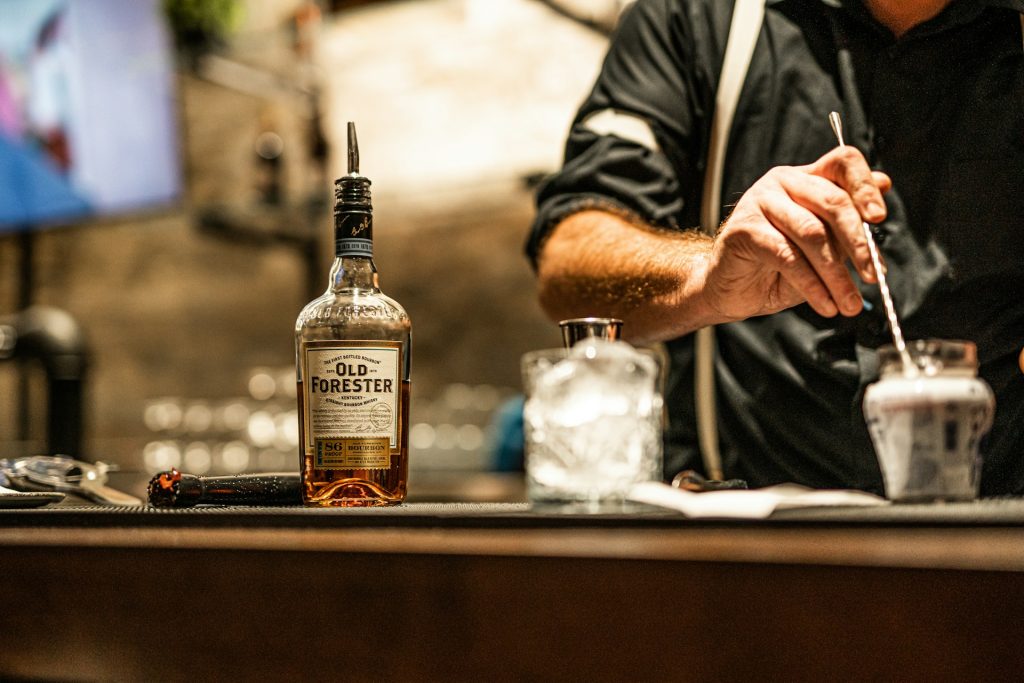
Bourbon vs Scotch and Irish Whiskey
While bourbon, Scotch, and Irish whiskey are all beloved spirits, they have distinct differences in production methods, ingredients, and flavor profiles. Understanding these differences can help newcomers appreciate the unique characteristics of each style.
Production Differences
Ingredients:
- Bourbon: Must contain at least 51% corn in its mash bill.
- Single malt Scotch: Made from 100% malted barley.
- Single malt Irish whiskey: Made from 100% malted barley.
- Single Pot Still Irish Whiskey: Minimum of 30% malted and 30% unmalted barley
Distillation:
- Bourbon: Column distilled, then doubler/thumper distilled
- Single malt Scotch: Usually double distilled, with pot stills
- Single malt Irish whiskey: Traditionally triple-distilled, resulting in a smoother spirit.
Aging:
- Bourbon: Must be aged in new, charred oak barrels.
- Scotch and Irish whiskey: Can use previously used barrels, often including those that held other spirits like sherry or bourbon.
Flavour Comparisons
- Bourbon: Generally sweet with prominent vanilla, caramel, and oak notes. Often has a full body and rich mouthfeel.
- Scotch: Flavors vary widely by region, but often feature malty notes, dried fruit, and sometimes peaty or smoky notes (especially in Islay Scotches).
- Irish whiskey: Typically smoother and lighter-bodied, with notes of toasted cereal, fruit, and honey. Peated Irish whiskeys are less common.
FAQs
1. Does bourbon have to be made in Kentucky?
No, bourbon can be made anywhere in the United States. While Kentucky produces about 95% of the world’s bourbon, it can legally be made in any U.S. state.
2. What’s the difference between whiskey and bourbon?
All bourbon is whiskey, but not all whiskey is bourbon. Bourbon must meet specific legal requirements, including being made in the U.S., using at least 51% corn in the mash bill, and aging in new, charred oak barrels.
3. Is Jack Daniel’s a bourbon?
Technically, Jack Daniel’s meets all the requirements to be called bourbon. However, it’s classified as Tennessee whiskey due to an extra step in its production process called the Lincoln County Process.
4. Why is bourbon sweeter than other whiskeys?
Bourbon’s sweetness primarily comes from its high corn content (at least 51%) in the mash bill. The new, charred oak barrels also contribute sweet flavors like vanilla and caramel.
5. Can bourbon be flavored?
No, bourbon cannot have any added flavors or coloring. Once it’s distilled, only water can be added to adjust the proof for bottling.
Summary
- Bourbon must be made in the USA with at least 51% corn in its mash bill.
- It’s aged in new, charred oak barrels, contributing significantly to its flavor profile.
- Bourbon cannot contain any added flavors or coloring, only water to adjust proof.
- Its production process and ingredients result in a typically sweeter profile compared to other whiskeys.
- While often associated with Kentucky, bourbon can be legally produced in any U.S. state.


